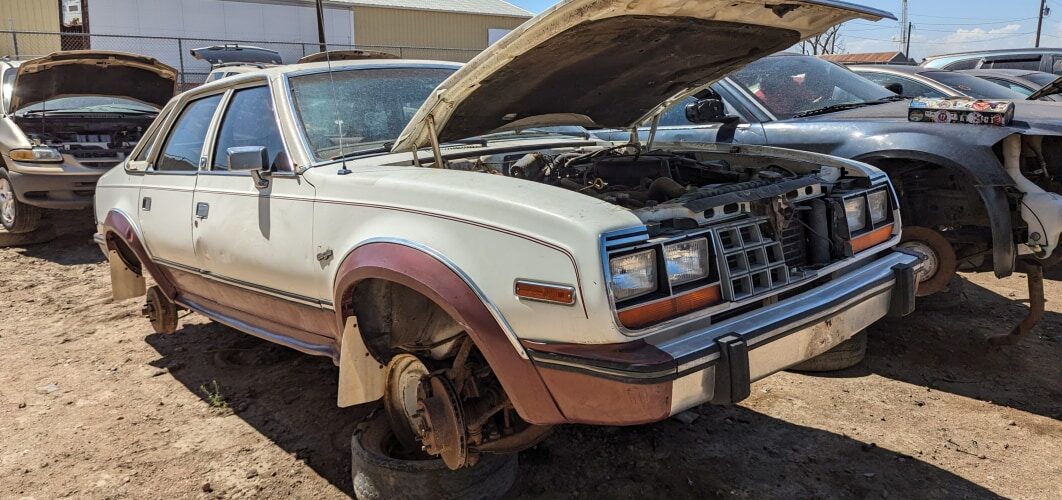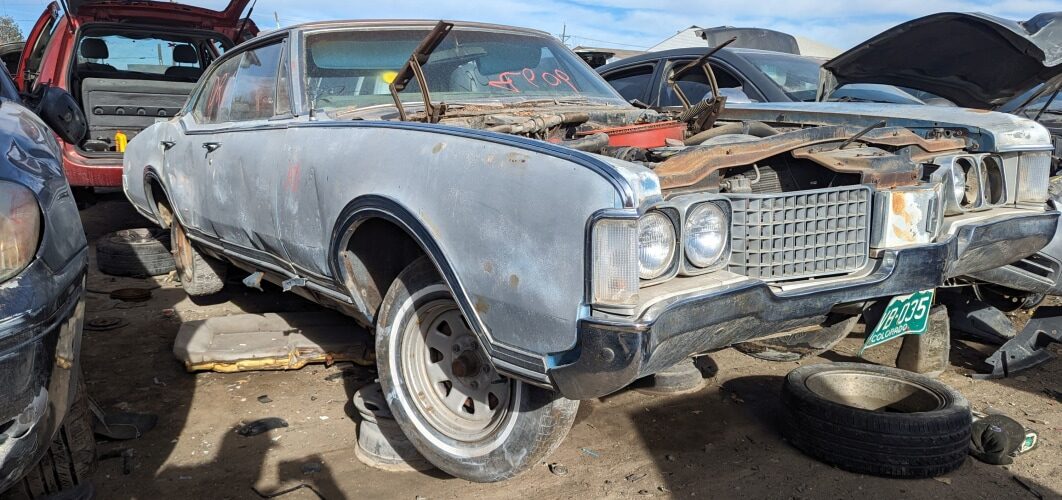The American Motors Corporation’s Eagle was the first production car sold in the United States with what we’d now describe as a true all-wheel-drive system, beating Audi’s Quattro-equipped cars to showrooms. During the Eagle’s run through the 1980 through 1988 model years, the wagon version was by far the biggest seller and nearly all the discarded examples I find during my junkyard travels are wagons. Today, though, we’ve got a four-door Eagle sedan, found in a northeastern Colorado self-service yard recently.

For 1980, the Eagle was based on the AMC Concord and came in sedan, coupe and wagon form. The following year saw the addition of Eagles based on the smaller AMC Spirit, which expanded the lineup to include the Eagle Kammback sedan and the sporty Eagle SX/4. By 1984, only the wagon and sedan remained.

Only 1,274 Eagle sedans were built for the 1986 model year, with sedan sales dropping below 500 for 1987. Chrysler kept building Eagle wagons after buying American Motors in 1987, creating a new division using the Eagle name for 1988. That meant that final-year Eagle wagons were Eagle Eagles, legally speaking (though they kept all their AMC badging for that year).

Even though American Motors had owned Jeep for nearly a decade when it began design work on the Eagle, the drivetrain in this car isn’t just lifted straight across from the Jeep parts bin.

There’s a center viscous coupling between the front and rear axles and no truck-style low-range gear selector. Starting with the 1981 Eagles, the driver could use a simple electrical switch to choose rear-wheel-drive and save fuel.

But if you wanted to stay in four-wheel-drive mode at all times, no problem. Try driving a 1986 4WD-equipped Subaru or Toyota Tercel 4WD Wagon for long distances on dry pavement in four-wheel-drive mode and you’d tear up the tires or worse (Subaru and Toyota introduced their new AWD systems to the North American market for the 1987 and 1988 model years, respectively).

Of course, Audi would sell you a 4000CS Quattro sedan with no-driver-brains-required AWD that year for $17,800 ($51,008 in 2024 dollars), and Volkswagen added the Syncro-equipped Quantum for the following year. The 1986 Eagle sedan had an MSRP of just $10,719, or $30,716 after inflation.

This particular car probably cost a lot more than that, what with all the pricey options. The power door locks were $189 ($542 now), for example.

The air conditioning cost $795 ($2,278 today), while this top-of-the-line four-speaker AM/FM/cassette audio system with digital tuning had a price tag of $447 ($1,281 now).

AMC and GM 2.5-liter four-cylinder engines were available in earlier Eagles, but the 258-cubic-inch (4.2-liter) AMC straight-six was the only Eagle powerplant choice for the 1985 through 1988 model years.

A five-speed manual transmission was base equipment; this car has the optional three-speed automatic. The price: $379, or $1,086 in 2024 money.

American Motors used these door tags for decade after decade.

This car was sold at Spearfish Motors in South Dakota, which still exists today but now sells just GMCs, Cadillacs and Hummers.

It’s in nice condition with a decent interior and no rust to speak of, but nobody was willing to rescue it before it came to this sad fate.
It leaves the world of ordinary cars behind.
AMC didn’t give much advertising screen time to the Eagle sedan.











